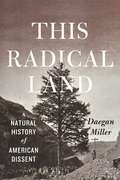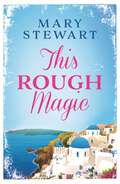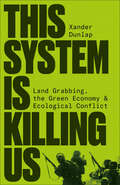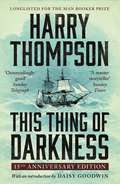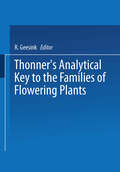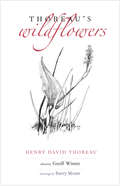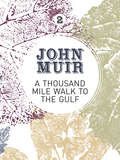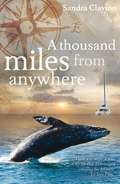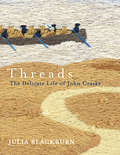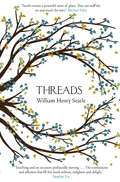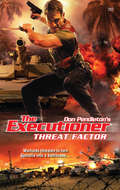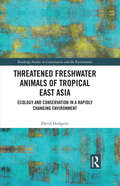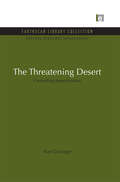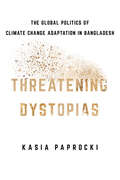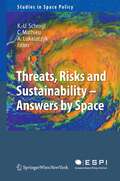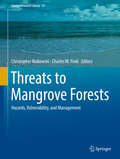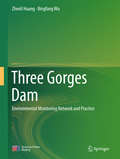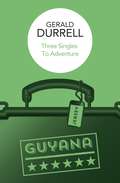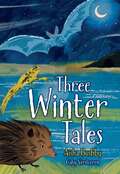- Table View
- List View
This Radical Land: A Natural History of American Dissent
by Daegan Miller“The American people sees itself advance across the wilderness, draining swamps, straightening rivers, peopling the solitude, and subduing nature,” wrote Alexis de Tocqueville in 1835. That’s largely how we still think of nineteenth-century America today: a country expanding unstoppably, bending the continent’s natural bounty to the national will, heedless of consequence. A country of slavery and of Indian wars. There’s much truth in that vision. But if you know where to look, you can uncover a different history, one of vibrant resistance, one that’s been mostly forgotten. This Radical Land recovers that story. Daegan Miller is our guide on a beautifully written, revelatory trip across the continent during which we encounter radical thinkers, settlers, and artists who grounded their ideas of freedom, justice, and progress in the very landscapes around them, even as the runaway engine of capitalism sought to steamroll everything in its path. Here we meet Thoreau, the expert surveyor, drawing anticapitalist property maps. We visit a black antislavery community in the Adirondack wilderness of upstate New York. We discover how seemingly commercial photographs of the transcontinental railroad secretly sent subversive messages, and how a band of utopian anarchists among California’s sequoias imagined a greener, freer future. At every turn, everyday radicals looked to landscape for the language of their dissent—drawing crucial early links between the environment and social justice, links we’re still struggling to strengthen today. Working in a tradition that stretches from Thoreau to Rebecca Solnit, Miller offers nothing less than a new way of seeing the American past—and of understanding what it can offer us for the present . . . and the future.
This Radical Land: A Natural History of American Dissent
by Daegan Miller“The American people sees itself advance across the wilderness, draining swamps, straightening rivers, peopling the solitude, and subduing nature,” wrote Alexis de Tocqueville in 1835. That’s largely how we still think of nineteenth-century America today: a country expanding unstoppably, bending the continent’s natural bounty to the national will, heedless of consequence. A country of slavery and of Indian wars. There’s much truth in that vision. But if you know where to look, you can uncover a different history, one of vibrant resistance, one that’s been mostly forgotten. This Radical Land recovers that story. Daegan Miller is our guide on a beautifully written, revelatory trip across the continent during which we encounter radical thinkers, settlers, and artists who grounded their ideas of freedom, justice, and progress in the very landscapes around them, even as the runaway engine of capitalism sought to steamroll everything in its path. Here we meet Thoreau, the expert surveyor, drawing anticapitalist property maps. We visit a black antislavery community in the Adirondack wilderness of upstate New York. We discover how seemingly commercial photographs of the transcontinental railroad secretly sent subversive messages, and how a band of utopian anarchists among California’s sequoias imagined a greener, freer future. At every turn, everyday radicals looked to landscape for the language of their dissent—drawing crucial early links between the environment and social justice, links we’re still struggling to strengthen today. Working in a tradition that stretches from Thoreau to Rebecca Solnit, Miller offers nothing less than a new way of seeing the American past—and of understanding what it can offer us for the present . . . and the future.
This Radical Land: A Natural History of American Dissent
by Daegan Miller“The American people sees itself advance across the wilderness, draining swamps, straightening rivers, peopling the solitude, and subduing nature,” wrote Alexis de Tocqueville in 1835. That’s largely how we still think of nineteenth-century America today: a country expanding unstoppably, bending the continent’s natural bounty to the national will, heedless of consequence. A country of slavery and of Indian wars. There’s much truth in that vision. But if you know where to look, you can uncover a different history, one of vibrant resistance, one that’s been mostly forgotten. This Radical Land recovers that story. Daegan Miller is our guide on a beautifully written, revelatory trip across the continent during which we encounter radical thinkers, settlers, and artists who grounded their ideas of freedom, justice, and progress in the very landscapes around them, even as the runaway engine of capitalism sought to steamroll everything in its path. Here we meet Thoreau, the expert surveyor, drawing anticapitalist property maps. We visit a black antislavery community in the Adirondack wilderness of upstate New York. We discover how seemingly commercial photographs of the transcontinental railroad secretly sent subversive messages, and how a band of utopian anarchists among California’s sequoias imagined a greener, freer future. At every turn, everyday radicals looked to landscape for the language of their dissent—drawing crucial early links between the environment and social justice, links we’re still struggling to strengthen today. Working in a tradition that stretches from Thoreau to Rebecca Solnit, Miller offers nothing less than a new way of seeing the American past—and of understanding what it can offer us for the present . . . and the future.
This Rough Magic: A completely unputdownable South of France adventure from the Queen of the Romantic Mystery (Coronet Bks.)
by Mary StewartThe original queen of the page-turner Mary Stewart leads her readers on a thrilling journey through a dangerous and deadly Provence in this tale perfect for fans of Agatha Christie and Barbara Pym. 'Mary Stewart is magic' New York Times'One of the great British storytellers of the 20th century' IndependentLucy Waring, a young, out-of-work actress from London, leaps at the chance to visit her sister for a summer on the island paradise of Corfu, and what's more, a famous but reclusive actor is staying in a villa nearby. But Lucy's hopes for rest and romance are shattered when a body washes up on the beach and she finds herself swept up in a chilling chain of events. I shuddered, and drank my coffee, leaning back in my chair to gaze out across pine tops furry with gold towards the sparkling sea, and surrendering myself to the dreamlike feeling that marks the start of a holiday . . .'A comfortable chair and a Mary Stewart: total heaven. I'd rather read her than most other authors.' Harriet Evans'She built the bridge between classic literature and modern popular fiction. She did it first and she did it best.' Herald
This System is Killing Us: Land Grabbing, the Green Economy and Ecological Conflict
by Xander Dunlap“Dunlap is one of the foremost researchers on the unfolding relationship between ecocide, colonialism, extractivism, and green capitalism. ... An important book” Peter Gelderloos, author of The Solutions are Already Here “Vital for understanding the forces driving violence against land and water defenders around the world” Alleen Brown, investigative journalist“A passionate account of the harms of green capitalism” Professor Anna Feigenbaum, author of Tear Gas“One of the most compelling, demystifying, and provocative calls to action in the face of the violent collapse of modernity. A must-read” Dr. Carlos Tornel, author of Gustavo EstevaThis System is Killing Us is an insider look at the catastrophic effects that energy infrastructure and mining are having on communities and our planet. Xander Dunlap spent a decade living and working with Indigenous activists and land defenders across the world to uncover evidence of the repression people have faced in the wake of untamed capitalist growth.By centring the struggles of people whose lives are being systematically destroyed, Dunlap reveals gaps within the current official debates around climate change. This includes reviewing feuds between socialist modernism and degrowth. While changing public policy could play a constructive role in remediating climate catastrophe, by understanding the successes and failures of those “on the front lines”, it becomes clear that ecologically decentralized self-organization could be the only way out of this environmental nightmare.Xander Dunlap is a postdoctoral research fellow at the Institute for Global Sustainability, Boston University, USA, and a visiting research fellow in the Global Development Studies Department, University of Helsinki, Finland. Xander has written many books, most recently Enforcing Ecocide, and is a long-time participant in anti-police, squatting and environmental movements.
This Thing Of Darkness
by Harry ThompsonA brilliant, action-packed and gripping novel of Charles Darwin's voyage on the Beagle - longlisted for the Man Booker Prize. In 1831 Charles Darwin set off in HMS Beagle under the command of Captain Robert Fitzroy on a voyage that would change the world. 'An outstandingly good first novel. A page-turning action-adventure combined with subtle intellectual arguments. The meticulous research enriches this fascinating tale' Sunday Telegraph 'A master storyteller' Sunday TimesBrilliant young naval officer Robert FitzRoy is given the captaincy of HMS Beagle, surveying the wilds of Tierra del Fuego. He's a man of tradition and principle, with a firm belief in the sanctity of the individual in a world created by God. On board, is a passenger, Charles Darwin - a young trainee cleric, and amateur geologist. This is the story of a deep friendship between two men, and the twin obsessions that tear them apart, leading one to triumph, and the other to disaster.
Thonner’s analytical key to the families of flowering plants (Leiden Botanical Series #5)
by R. GeesinkThoreau's Wildflowers
by Henry David ThoreauSome of Henry David Thoreau’s most beautiful nature writing was inspired by the flowering trees and plants of Concord. An inveterate year-round rambler and journal keeper, he faithfully recorded, dated, and described his sightings of the floating water lily, the elusive wild azalea, and the late autumn foliage of the scarlet oak. This inviting selection of Thoreau’s best flower writings is arranged by day of the year and accompanied by Thoreau’s philosophical speculations and his observations of the weather and of other plants and animals. They illuminate the author’s spirituality, his belief in nature’s correspondence with the human soul, and his sense that anticipation—of spring, of flowers yet to bloom—renews our connection with the earth and with immortality. Thoreau’s Wildflowers features more than 200 of the black-and-white drawings originally created by Barry Moser for his first illustrated book, Flowering Plants of Massachusetts. This volume also presents “Thoreau as Botanist,” an essay by Ray Angelo, the leading authority on the flowering plants of Concord.
A Thousand-Mile Walk to the Gulf: A radical nature-travelogue from the founder of national parks (John Muir: The Eight Wilderness-Discovery Books #2)
by John Muir‘Many a beautiful plant cultivated to deformity, and arranged in strict geometrical beds, the whole pretty affair a laborious failure side by side with divine beauty.’A Thousand-Mile Walk to the Gulf is the second book in John Muir’s Wilderness-Discovery series. It is within this work that we are really given strong clues toward Muir’s future trailblazing movement for environmental conservation, in such comments as ‘The universe would be incomplete without man; but it would also be incomplete without the smallest transmicroscopic creature that dwells beyond our conceitful eyes and knowledge.’Muir’s walk from Indiana to Florida was conceived in order to explore and study further the flora and fauna across states. He undertakes this alone, a dangerous choice perhaps so soon after the civil war, as many characters along the way forewarn. Indeed, Muir is threatened by a robber, and we see a new side to the quiet, lowly gentleman we know as he springs into self-defence mode with lightning initiative and remarkable courage.This is not the only facet of Muir’s personality that is uncovered throughout this journey. He makes reference to feeling ‘dreadfully lonesome and poor’, which is intriguing as his circumstances are self-sought: ‘Stayed with lots of different people but preferred sleeping outside alone where possible’. He spends a substantial period of time struck down with malaria, which does not come as a surprise; he was covering many miles on an unsustainably meagre diet with thirst often quenched with swamp water or not at all.Join Muir in Kentucky forests, Cumberland mountains, Florida swamps and all the elegantly described trees, plants, creatures and rocks in-between. A Thousand-Mile Walk to the Gulf teaches us as much about Muir himself as it does the ecosystems in the wilderness across those 1,000 miles.
A Thousand Miles from Anywhere: The Claytons cross the Atlantic and sail the Caribbean on the third leg of their voyage
by Sandra ClaytonFollowing Dolphins Under My Bed and Turtles in Our Wake comes the third leg of the Claytons' voyage, two early retirees who decided to live life sailing from place to place to fulfil their dream.Told uniquely from the wife's perspective, Sandra Clayton was initially a reluctant sailor, but became a keen yachtswoman by the end of the first book when the couple sailed from the UK to the Mediterranean. In this installment she describes their transatlantic crossing, from Gibraltar via the Atlantic Islands to the Caribbean, and ending up in Fort Lauderdale.Sandra's previous two books have attracted a loyal and growing readership both in the UK and the US, no doubt due to her engaging writing style. A Thousand Miles from Anywhere is a similarly entertaining travelogue about the Claytons' experiences, detailing the wonderful places they visited, the fascinating people they met and the humorous situations they got involved in.Acclaim for Sandra's writing: 'With her eye for detail and vivid descriptions, Sandra carries the reader with her' - Yachting Life
Threads: The Delicate Life of John Craske
by Julia BlackburnWinner of the East Anglian Book of the Year 2015 Winner of the New Angle Book Prize 2017John Craske, a Norfok fisherman, was born in 1881 and in 1917, when he had just turned thirty-six, he fell seriously ill. For the rest of his life he kept moving in and out of what was described as ‘a stuporous state’. In 1923 he started making paintings of the sea and boats and the coastline seen from the sea, and later, when he was too ill to stand and paint, he turned to embroidery, which he could do lying in bed. His embroideries were also the sea, including his masterpiece, a huge embroidery of The Evacuation of Dunkirk.Very few facts about Craske are known, and only a few scattered photographs have survived, together with accounts by the writer Sylvia Townsend Warner and her lover Valentine Ackland, who discovered Craske in 1937. So - as with all her books - Julia Blackburn’s account of his life is far from a conventional biography. Instead it is a quest which takes her in many strange directions - to fishermen’s cottages in Sheringham, a grand hotel fallen on hard times in Great Yarmouth and to the isolated Watch House far out in the Blakeney estuary; to Cromer and the bizarre story of Einstein’s stay there, guarded by dashing young women in jodhpurs with shotguns. Threads is a book about life and death and the strange country between the two where John Craske seemed to live. It is also about life after death, as Julia’s beloved husband Herman, a vivid presence in the early pages of the book, dies before it is finished. In a gentle meditation on art and fame; on the nature of time and the fact of mortality; and illustrated with Craske’s paintings and embroideries, Threads shows, yet again, that Julia Blackburn can conjure a magic that is spellbinding and utterly her own.
Threads: Finding Pattern In The Everyday
by William Henry Searle____________________________________"Touching and on occasion profoundly moving ... The connections and affinities that fill this book enliven, enlighten and delight." - STEPHEN FRYA lyrical journey through life, love and natureWeaving together personal stories, Threads deals with the meanings of intimacy, vulnerability and our affinities with people and places, both wild and tame. It is a deep exploration of the encounters that lend quiet networks of grace to our busy lives.William Henry Searle casts an eye back to episodes spent in close and tender relationships with members of his family, childhood friends, animals and loved ones, in places that range from his father’s scrap metal yards, to the jungles of Borneo, an Oregon river and the Swiss Alps. In thoughtful, elegant prose, Searle celebrates the quiet conversations that nourish us, and the everyday patterns of connection that give meaning to our human existence.____________________________________"An exceptionally rich celebration of the natural world, by turns rapturous and melancholy, and often – in strikingly original ways – both at the same time." - SIR ANDREW MOTION
Threat Factor
by Don PendletonA Somali pirate attack raises a red flag when the stolen cargo is Russian tanks and ammunition–enough to start a civil war. Called in to seek and destroy the weapons, Mack Bolan knows the only way to head off future bloodshed is to cause some deadly mayhem of his own.
Threatened Freshwater Animals of Tropical East Asia: Ecology and Conservation in a Rapidly Changing Environment (Routledge Studies in Conservation and the Environment)
by David DudgeonThis book offers a comprehensive account of the current state of inland waters in tropical and subtropical East Asia, exploring a series of case studies of freshwater fish, reptiles, amphibians, birds, mammals and water bodies at particular risk. The book highlights the rich freshwater biodiversity of tropical East Asia and draws attention to the various threats it faces due to human activities and rapid environmental change. It addresses the question of whether the contributions of these animals and habitats, or biodiversity in general, to ecosystem functioning and service provision provide sufficient basis for arguments supporting nature conservation. Drawing on instances from the rivers and lakes of tropical East Asia, the book also asks whether the benefits accruing from intact ecosystems are likely to be enough to ensure their preservation. If the answer to either or both these questions is ‘no’, then what are the prospects for freshwater biodiversity in rapidly changing tropical East Asia? This book will be of interest to students and scholars of biodiversity, conservation, freshwater ecology, ecosystem services and Asian Studies.
Threatened Freshwater Animals of Tropical East Asia: Ecology and Conservation in a Rapidly Changing Environment (Routledge Studies in Conservation and the Environment)
by David DudgeonThis book offers a comprehensive account of the current state of inland waters in tropical and subtropical East Asia, exploring a series of case studies of freshwater fish, reptiles, amphibians, birds, mammals and water bodies at particular risk. The book highlights the rich freshwater biodiversity of tropical East Asia and draws attention to the various threats it faces due to human activities and rapid environmental change. It addresses the question of whether the contributions of these animals and habitats, or biodiversity in general, to ecosystem functioning and service provision provide sufficient basis for arguments supporting nature conservation. Drawing on instances from the rivers and lakes of tropical East Asia, the book also asks whether the benefits accruing from intact ecosystems are likely to be enough to ensure their preservation. If the answer to either or both these questions is ‘no’, then what are the prospects for freshwater biodiversity in rapidly changing tropical East Asia? This book will be of interest to students and scholars of biodiversity, conservation, freshwater ecology, ecosystem services and Asian Studies.
The Threatening Desert: Controlling desertification (Natural Resource Management Set)
by Alan GraingerLands lost to desert may effectively be lost for ever, so desertification is humanity's most obvious despoliation to the planet. It is certainly one of the most serious environmental problems facing the world today. In this book the author describes what is happening and where. Although the problem is greatest in developing countries, it is by no means confined to them. Australia, Africa, the USA and India are all affected. In the 1970s an international Plan of Action was drawn up to bring the phenomenon under control, but it was never implemented. Now that the situation is more serious than ever before, this book urges new action and describes many of the myriad ways in which it is possible to arrest the progress of desertification. It describes, too, not just the failures, but the considerable successes that have been achieved. Originally published in 1990
The Threatening Desert: Controlling desertification (Natural Resource Management Set)
by Alan GraingerLands lost to desert may effectively be lost for ever, so desertification is humanity's most obvious despoliation to the planet. It is certainly one of the most serious environmental problems facing the world today. In this book the author describes what is happening and where. Although the problem is greatest in developing countries, it is by no means confined to them. Australia, Africa, the USA and India are all affected. In the 1970s an international Plan of Action was drawn up to bring the phenomenon under control, but it was never implemented. Now that the situation is more serious than ever before, this book urges new action and describes many of the myriad ways in which it is possible to arrest the progress of desertification. It describes, too, not just the failures, but the considerable successes that have been achieved. Originally published in 1990
Threatening Dystopias: The Global Politics of Climate Change Adaptation in Bangladesh (Cornell Series on Land: New Perspectives on Territory, Development, and Environment)
by Kasia PaprockiBangladesh is currently ranked as one of the most climate vulnerable countries in the world. In Threatening Dystopias, Kasia Paprocki investigates the politics of climate change adaptation throughout the South Asian nation. Drawing on ethnographic and archival fieldwork, she engages with developers, policy makers, scientists, farmers, and rural migrants to show how Bangladeshi and global elites ignore the history of landscape transformation and its attendant political conflicts. Paprocki looks at how groups craft economic narratives and strategies that redistribute power and resources away from peasant communities. Although these groups claim that increased production of export commodities will reframe the threat of climate change into an opportunity for economic development and growth, the reality is not so simple. For the country's rural poor, these promises ring hollow. As development dispossesses the poor from agrarian livelihoods, outmigration from peasant communities leads to precarious existences in urban centers. And a vision of development in which urbanization and export-led growth are both desirable and inevitable is not one the land and its people can sustain. Threatening Dystopias shows how a powerful rural movement, although hampered by an all-consuming climate emergency, is seeking climate justice in Bangladesh.
Threats, Risks and Sustainability - Answers by Space (Studies in Space Policy #2)
by Kai-Uwe Schrogl Charlotte Mathieu Agnieszka LukaszczykDevelopment is challenged by, at least until 2050, a strong population, more severe environmental strains, growing mobility, and dwindling energy resources. All these factors will lead to serious consequences for humankind. Inadequate agricultural resources, water supply and non renewable energy sources, epidemics, climate change, and natural disasters will further heavily impact human life. The European Space Policy Institute (ESPI) sheds a new light on threats, risks and sustainability by combining approaches from various disciplines. It analyzes what could be the contribution of space tools to predict, manage and mitigate those threats. It aims at demonstrating that space is not a niche but has become an overarching tool in solving today’s problems.
Threats to Mangrove Forests: Hazards, Vulnerability, and Management (Coastal Research Library #25)
by Christopher Makowski Charles W. FinklThis book focuses on the worldwide threats to mangrove forests and the management solutions currently being used to counteract those hazards. Designed for the professional or specialist in marine science, coastal zone management, biology, and related disciplines, this work will appeal to those not only working to protect mangrove forests, but also the surrounding coastal areas of all types. Examples are drawn from many different geographic areas, including North and South America, India, and Southeast Asia. Subject areas covered include both human-induced and natural impacts to mangroves, intended or otherwise, as well as the efforts being made by coastal researchers to promote restoration of these coastal fringing forests.
Three Gorges Dam: Environmental Monitoring Network and Practice
by Zhenli Huang Bingfang WuThis is the first English book talking about the Three Gorges Project Eco-Environmental Monitoring System (TGPEEMS). It presents lessons learned in construction of large dam projects at home and abroad in this field, identifies existing problems before suggesting a scientific improvement plan. and, most importantly, it studies modification of the TGPEEMS to adapt it to the changing situation after the impoundment of the reservoir, and provides an essential overview of measures and progress in the ecological and environmental protection for the ongoing project. As such, it offers a valuable reference guide for both researchers and environmental decision-makers.Prof. Zhenli Huang works at the National Research Center for Sustainable Hydropower Research, China Institute of Water Resources and Hydropower Research. Prof. Bingfang Wu works at the Institute of Remote Sensing Applications, Chinese Academy of Sciences, China.
Three Little Pigs 4 (Three little pig's in the brick house) (large Print)
by Rnib BookshareThis image shows the wolf on the left of the page and the three little pigs in the brick house on the right of the page. There is a locator dot shown, which will be at the top left of the page when the image is the right way up. The wolf is shown sitting from the side so only one eye and ear, and two of its four legs can be found. It is facing to the right. Its tail sticks up on the left and its mouth is open on the right. It is showing some sharp teeth as it tries to blow the house down. To the right of the wolf the brick house is standing firmly. The three little pigs are looking out of the window so their legs cannot be found. The third little pig is between his brothers and they are patting him on the shoulder because his house is keeping them safe. They are all smiling.
Three Little Pigs 4 (Three little pig's in the brick house) UEB Uncontracted)
by Rnib BookshareThis image shows the wolf on the left of the page and the three little pigs in the brick house on the right of the page.
Three Singles to Adventure
by Gerald DurrellGerald Durrell is on his way to South America on a quest to capture specimens that have never before been brought back alive. And it turns into quite an adventure when he encounters timid squirrel monkeys, wailing rats, an overly affectionate bird christened Cuthbert and a bad-tempered anaconda! Bringing back a living collection of animals can be frustrating, exciting and damned hard work, but it’s never dull!
